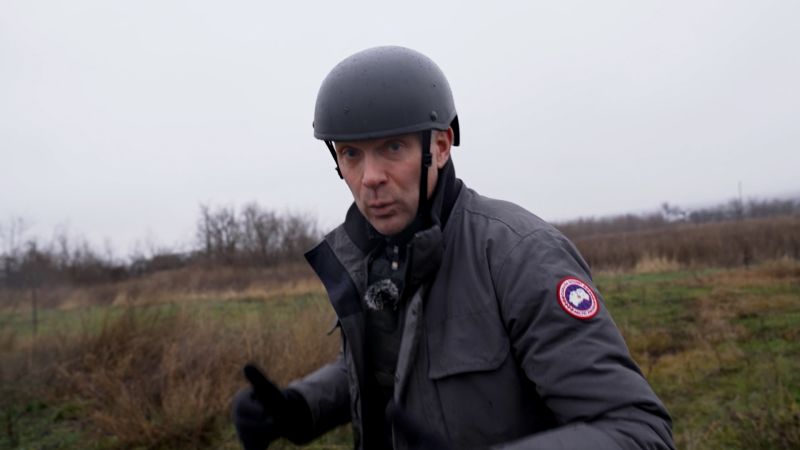
Gas, drones and convict recruits: Ukrainian soldiers describe Russia’s deadly surge on the frontlines
The front lines where Ukraine and its allies had hoped for a summer breakthrough now epitomize the bleak, dark winter ahead — of Russian resurgence and Kyiv’s mounting losses.
“Heavily injured,” the radio operator shouts at him. A Russian drone has hit a large gas fuel tank used for heating in a trench close to Russian positions, leaving one soldier hurt.
Ihor grabs the handset: “Begin the evacuation, begin the evacuation. Evacuate with a small vehicle… Did you move out already?”
The voice on the radio replies. They cannot evacuate, as they lack transport. Ihor’s face tightens in frustration – all he can do is wait for news in agonizing silence.
Minutes later, the radio crackles again. The soldier is “already 200” – military code for dead.
“It’s over,” Ihor tells his men. “No rush. We can’t help him.” The body of Sergei, aged 48, will now be collected after dark, when it is safer.
He is one of four Ukrainian soldiers killed that day, and about 50 that week in this area alone, according to a Ukrainian official in the area.
Waves of Russian convict recruits
“Every casualty makes a difference,” said Ihor. “It affects everyone’s morale. It is very painful for me.”
The winter fight is beyond bleak. North of Robotyne, where fierce fighting raged months ago, Ukrainian drones are outnumbered by Russian ones, with 40 of the latter hitting one Ukrainian trench network in a day recently.
CS gas, a riot control agent also known as tear gas, is a chemical compound that can render people temporarily unable to function by irritating the eyes, nose, mouth, lungs and skin, according to the US Centers for Disease Control and Prevention. The use of riot control agents in warfare is prohibited under the United Nations’ Chemical Weapons Convention.
There have been periodic reports of Russian soldiers using gas across the battlefield in recent months, yet its use around Orikhiv appears to be abnormally persistent.
The second soldier added: “You inhale it twice, then you cannot breathe.”
The men said they suffered injuries including burns and welts to their face, and inside their mouths and throats. Both men still had redness on their faces, residual signs of their injuries.
The alleged use of chemical agents on the battlefield marks another sign of the brutality and mendacity of Russia’s renewed fight for the terrain it lost. Ukraine had hoped for greater advances during the summer toward the Azov Sea, yet now must defend its minor gains.
“Colossal changes are taking place,” said the commander, Ihor. “[The Russians] started making their own attack drones and outnumber ours. But they use them badly, like a kid’s toy.”
The sheer number of Russians now at the front is disconcerting, multiple Ukrainian soldiers said. “Usually, more meat means more mince,” Ihor said, a reference to Russian generals throwing their forces into the “meatgrinder” of the front line without concern for their losses. “But sometimes the machine gets it right. And they have success.”
Ihor’s challenges are legion, and even evacuating the injured puts his limited vehicles at risk from Russian drone attacks. The crisis in US and EU funding for Ukraine is at the forefront of their minds here, as a series of grainy drone images show bare tree lines, injured Russian soldiers lolling in a crater, and a landscape so cruel it seems remarkable any human life emerges from it.
“Without support, we won’t make it,” he said.
